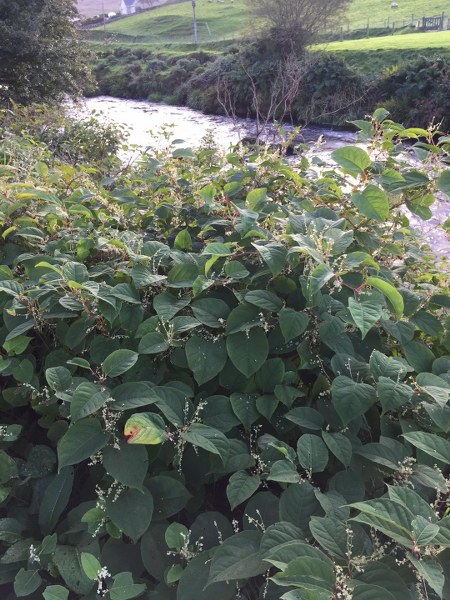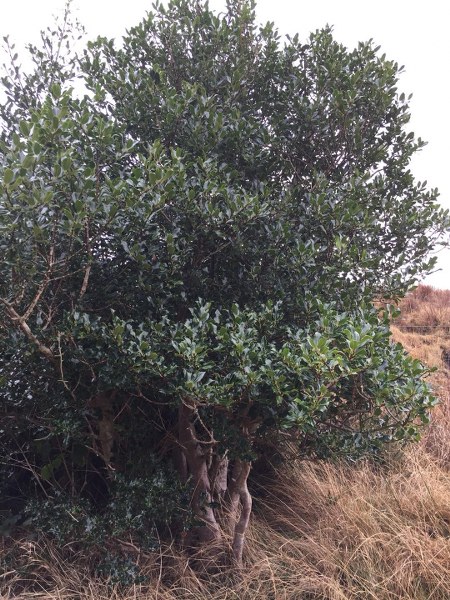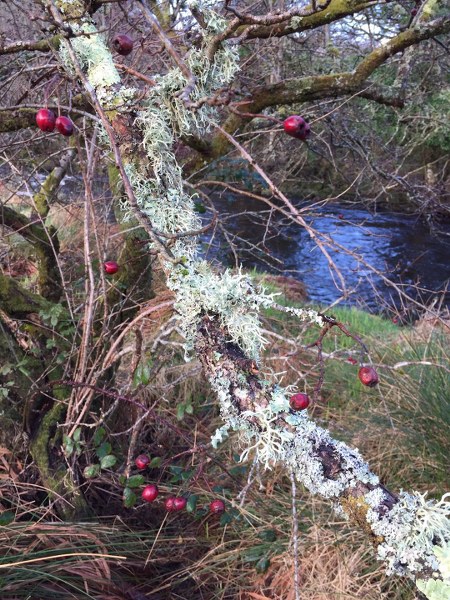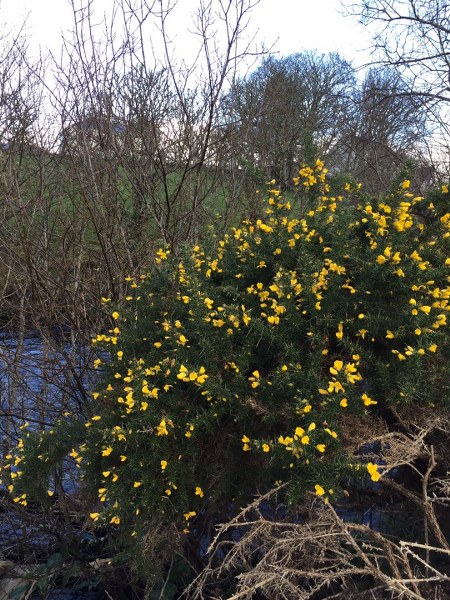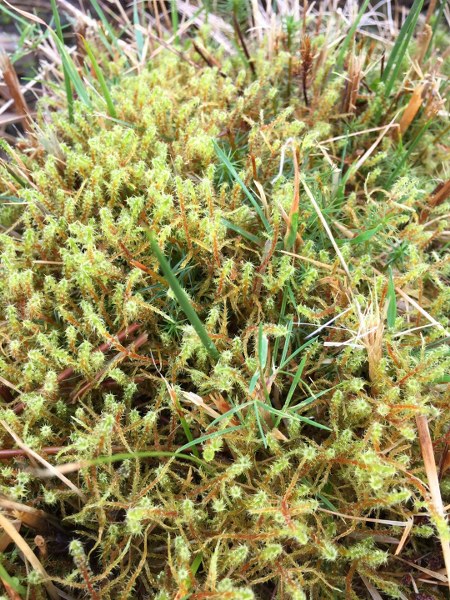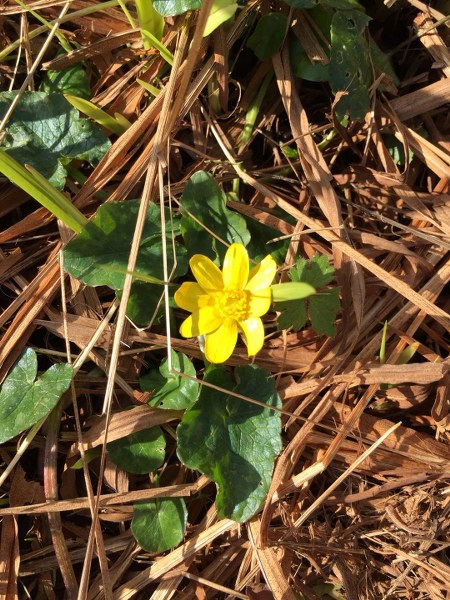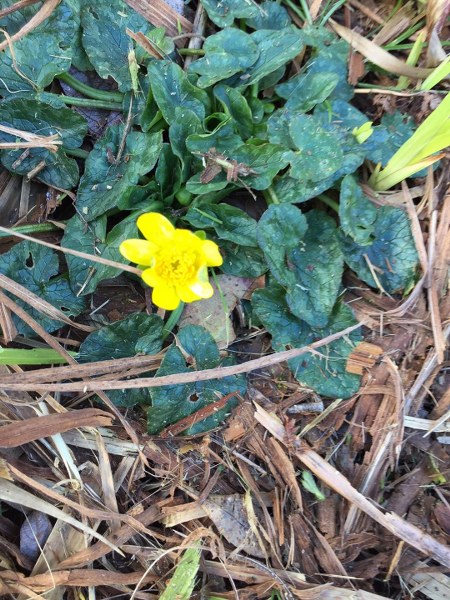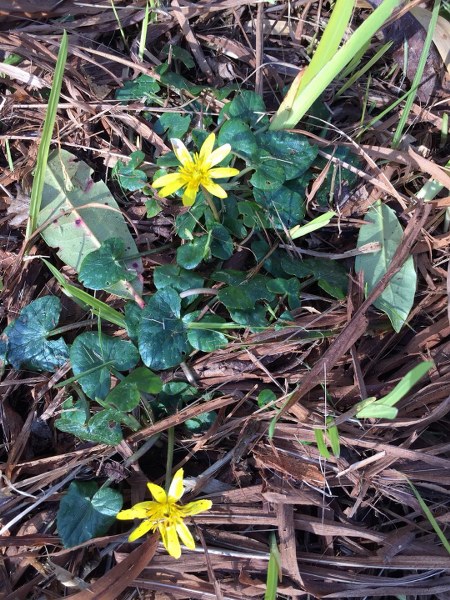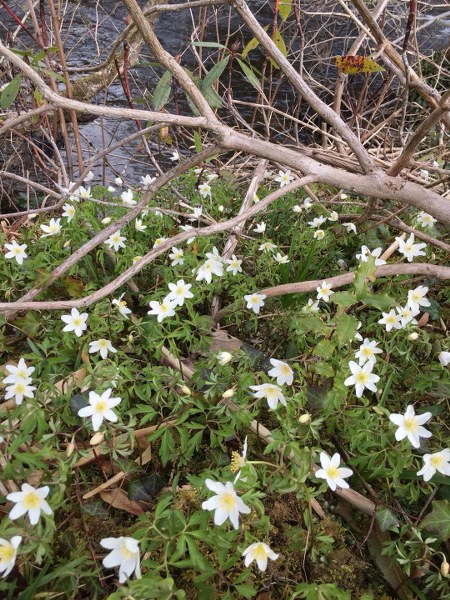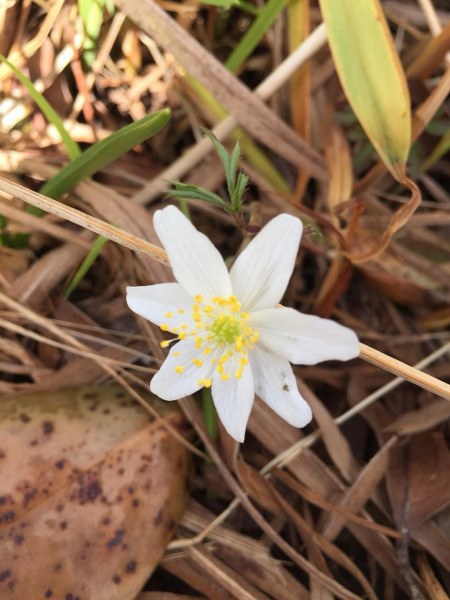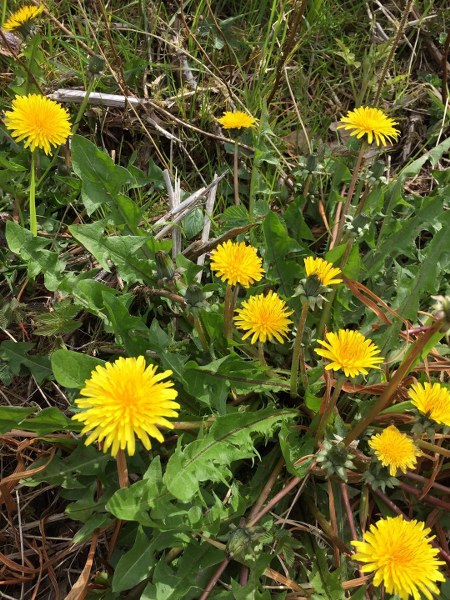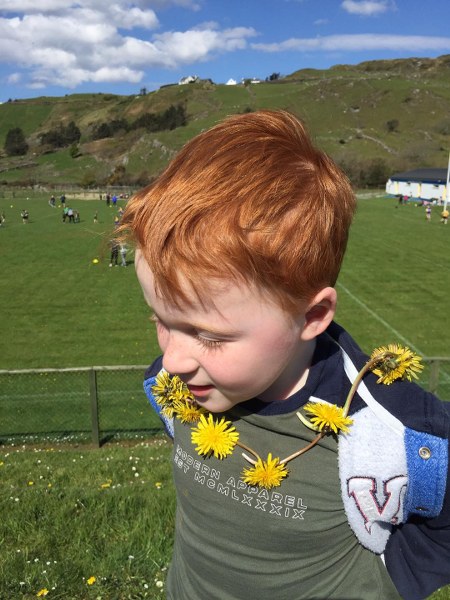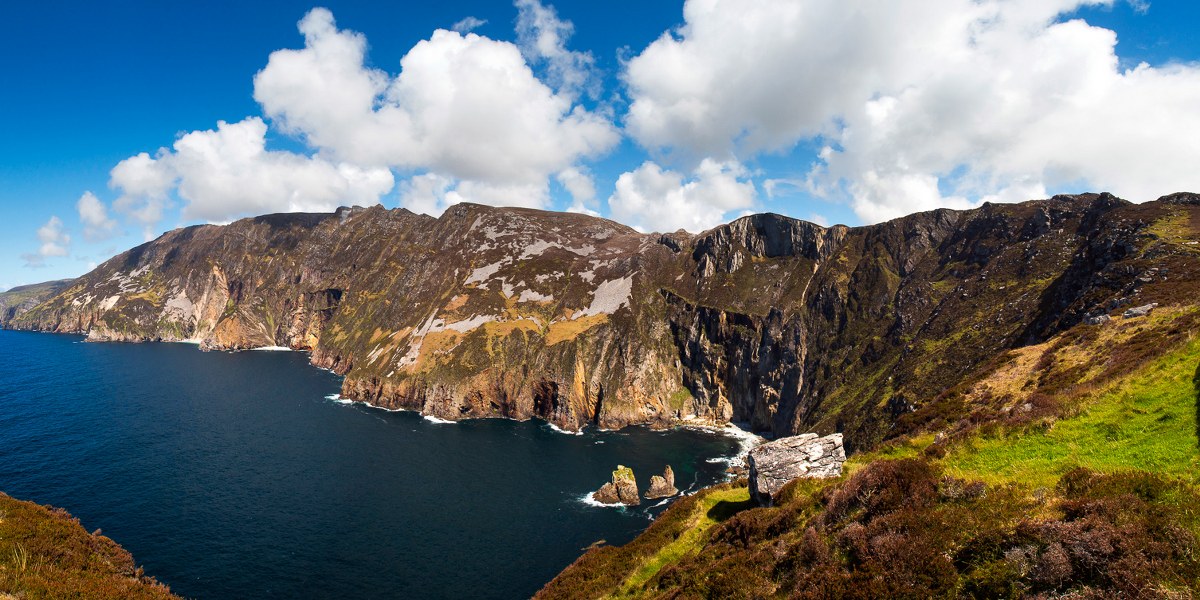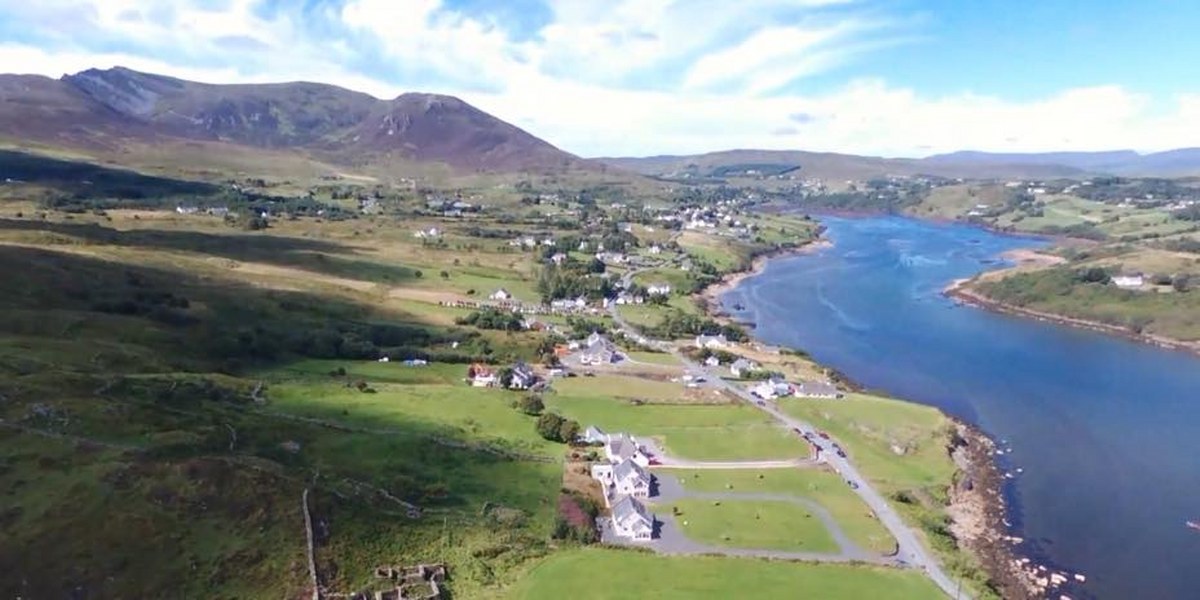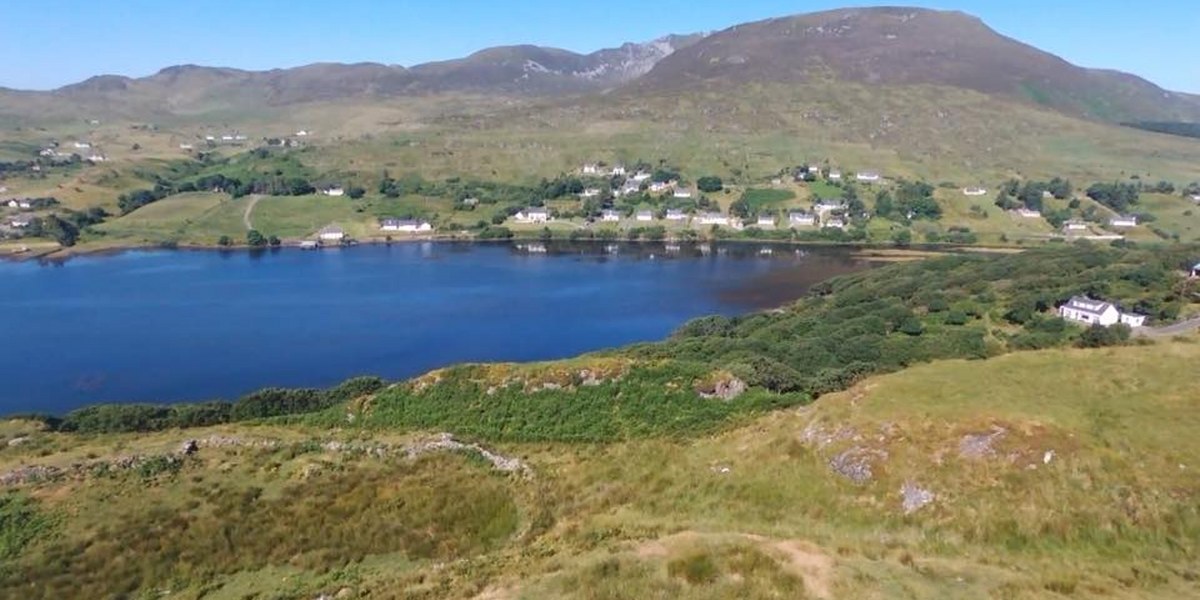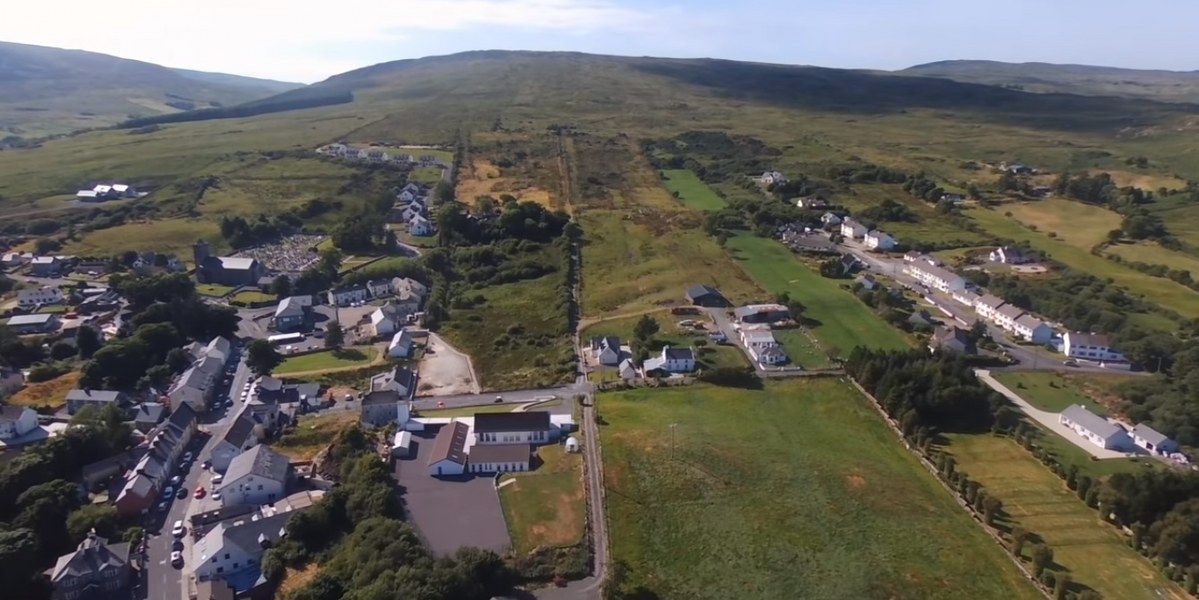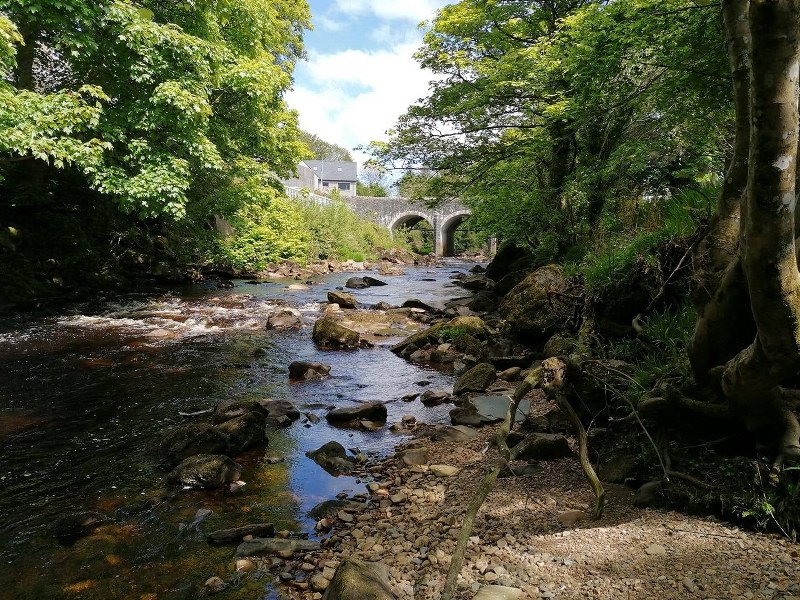
The Glen river rises in Lough na Lughramán located on the northern end of the Sliabh Liag peninsula, east of Granny Glen. It flows south through Stravally ( Srath an Bhealaigh), Largynasearagh (Leargain na Saorthe) Meenaneary, Straleel and through the village of Carrick into Teelin Bay estuary.
The River walk starts in Carrick beside the Day Care Centre and follows the river to the footbridge for a distance of about 1km.It is hoped that work on the reconstruction of the footbridge, which was destroyed by a flood during Storm Lorenzo in October 2019 will commence soon.
On the new Facebook page Mary McNelis will post photographs and information on the Flora and Fauna of the River Walk and we will update the website as well for those who do not use Facebook. It is a lovely amenity to have so close to our village and provides an oasis of peace and serenity.
We hope you will enjoy the posts and that they will enhance your appreciation of this special place.
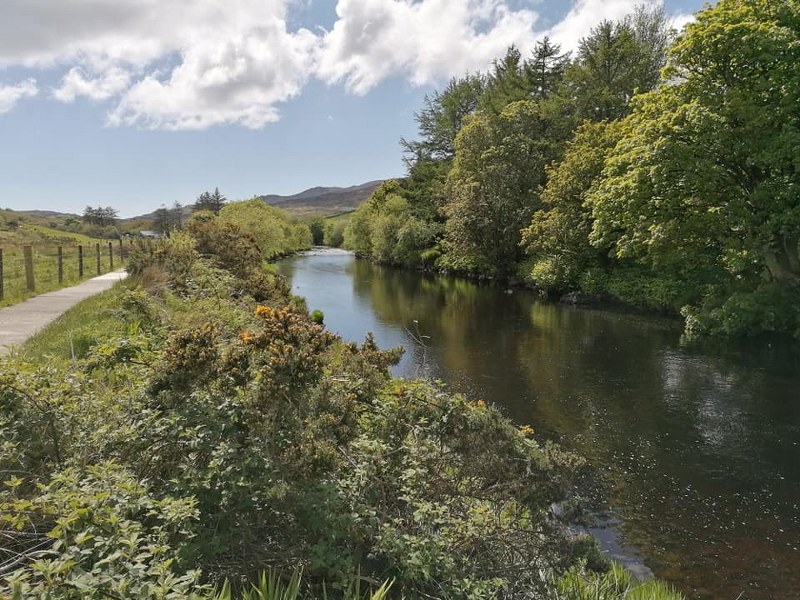
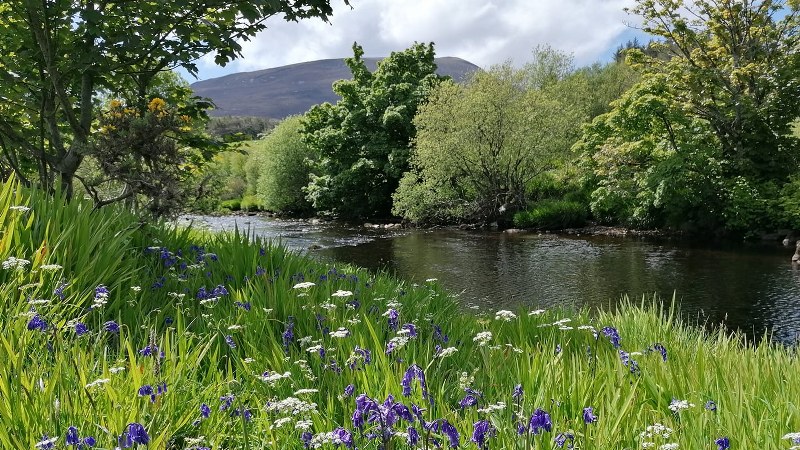
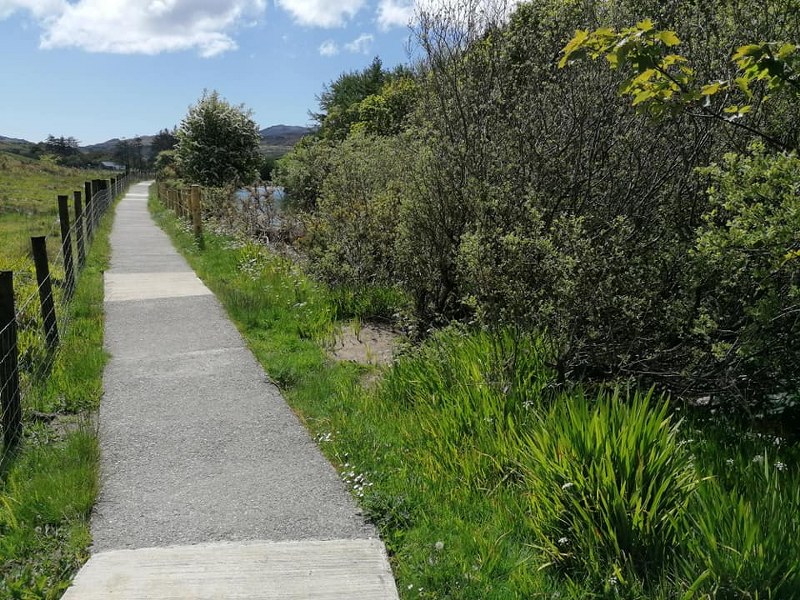
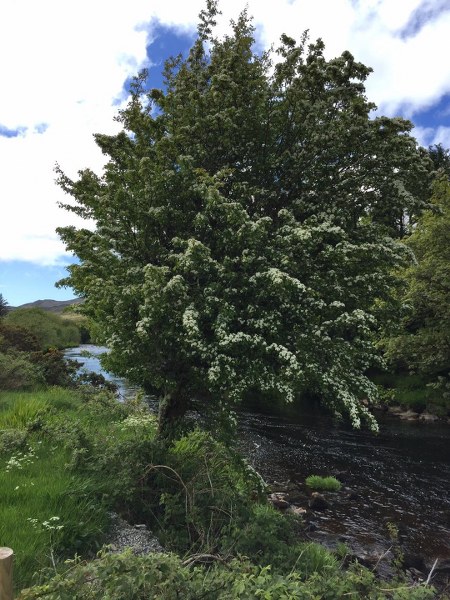
The Hawthorn is in bloom at the moment. It is also known as Whitethorn or Maybush, and is a symbol of Maytime.
There is a lot of folklore associated with the Hawthorn, particularly the ‘lone bush’. They are often found growing in ringforts or ráths and their presence there and the folk beliefs about them have probably contributed to the continued survival of many of these monuments.
Hawthorn blossoms were also considered to be unlucky, with death resulting if brought into the house. I remember as a child bringing some into the house and my mother quickly chasing me out with them saying they’d bring bad luck to the house.
A recent study showed that a chemical found in the early stages of human tissue decay is also present in hawthorn blossoms. Their association with ‘the smell of death’ might be the basis for this old folk belief or piseóg!
There are other Maytime customs associated with the Hawthorn. One popular one which still survives in parts of the country to this day is the cutting of a Maybush and decorating it with flowers ribbons egg shells and bright scraps of material. The decorated Maybush was placed in front of the house and was believed to bring luck to the occupants. I have friends in Wexford who do this every Mayday.
The Whitethorns were also associated with holy wells. One such story refers to St Colmcille and Tober an Deilg (Well of the thorns). The story goes that the saint had a thorn in his foot which he washed in the well. The thorn came out and grew into a Hawthorn tree.
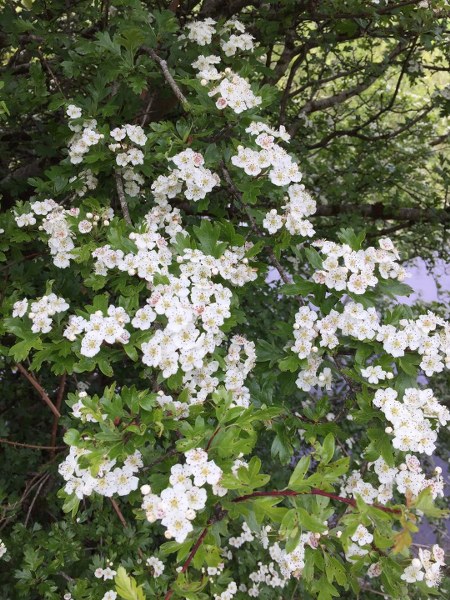
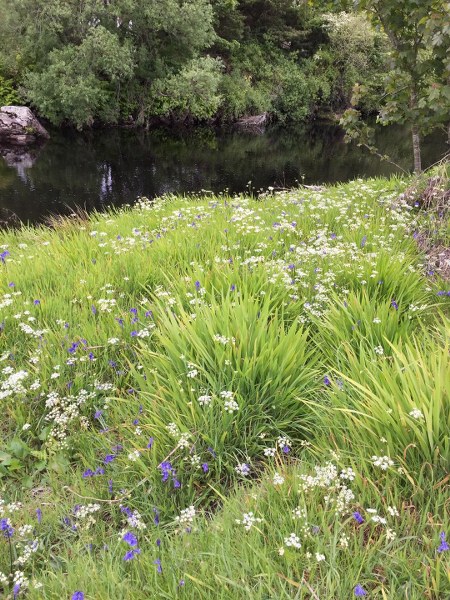
There is a lovely carpet of Bluebells (Hyacinthoides non scripta / Coinnle corra), along the River bank now, complimented by the delicate white flower of the Pignut Conopodium majus/ Cúlarán.
These native bluebells are closely related to the Spanish bluebell (Hyacinthoides Hispanics), pictured below growing in a clump in a garden. This species hybridises (cross breeds) easily with the native variety and can be invasive.
The bluebell grows from a small white bulb which has a gummy sap. The sap was reputedly used long ago as glue in book binding and setting the tail feathers on arrows.
In Irish folklore it is seen as a symbol of beauty. In Classical myth it was linked to the hyacinth which was a flower of grief and mourning.
There is a story from Glenties Co Donegal which states that Gráinne made a concoction of Bluebells and Tormentil which put Fionn and his men asleep before she eloped with Diarmuid.
There is a street song ‘In and out through the dusty bluebells’ which I remember from my childhood.
Pignut (Conopodium majus / Cúlarán has tiny white flowers which occur in umbels (shaped like umbrellas). The roots are similar to tubers or corms and were dug up by pigs, hence its name. In Co Donegal they were known as Síogaí prátaí or Fairy potatoes, and were said to have been eaten by humans and fairies and to taste like chestnuts or hazelnuts!
The old rhyme ‘Here we go gathering nuts in May’ refers to the Pignut.
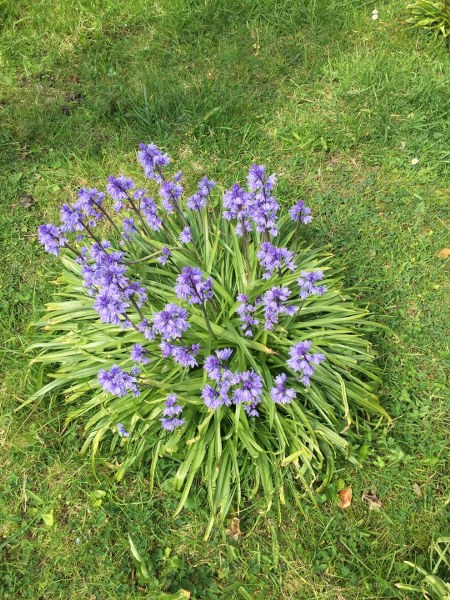
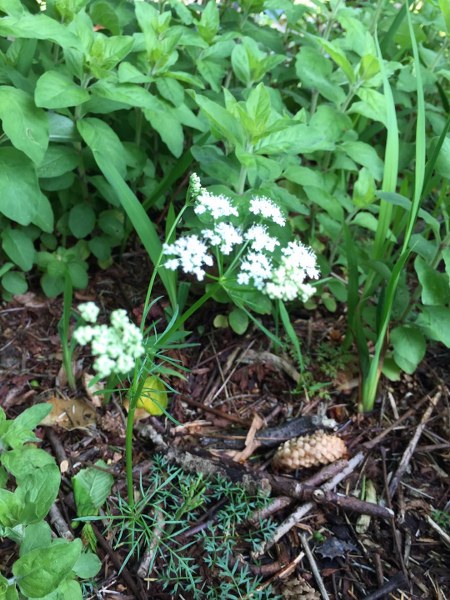
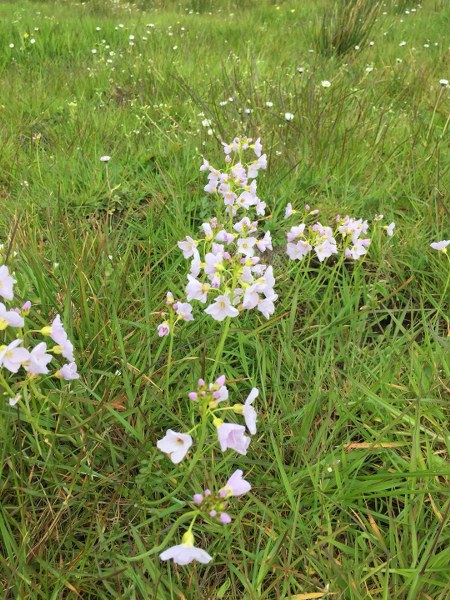
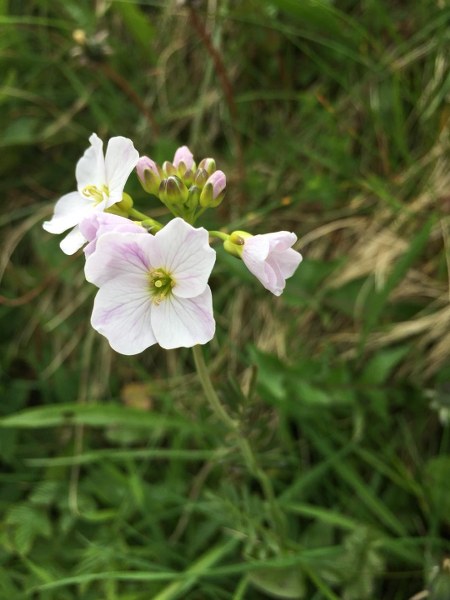
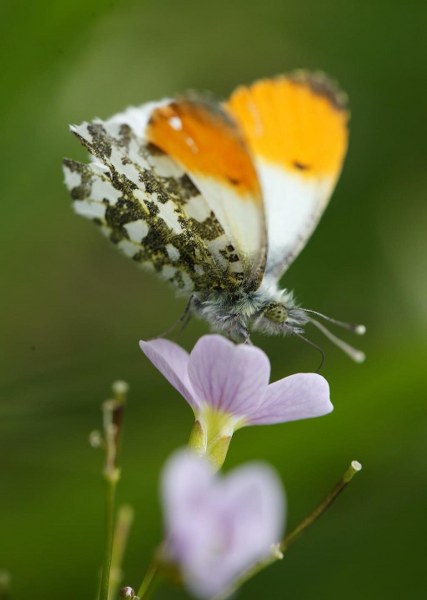
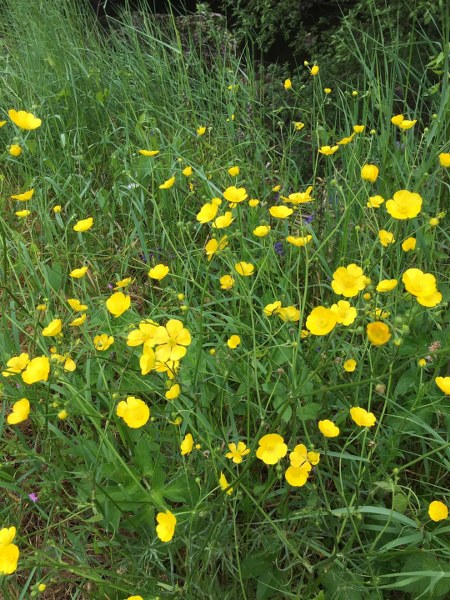
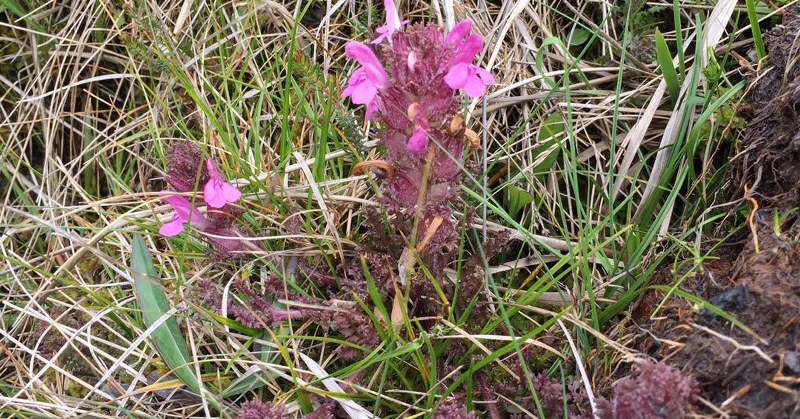
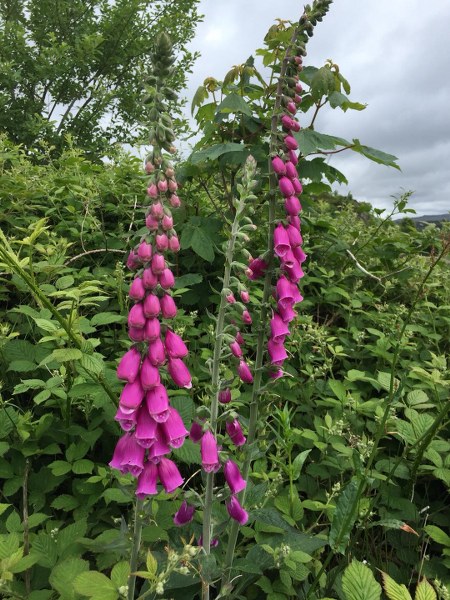
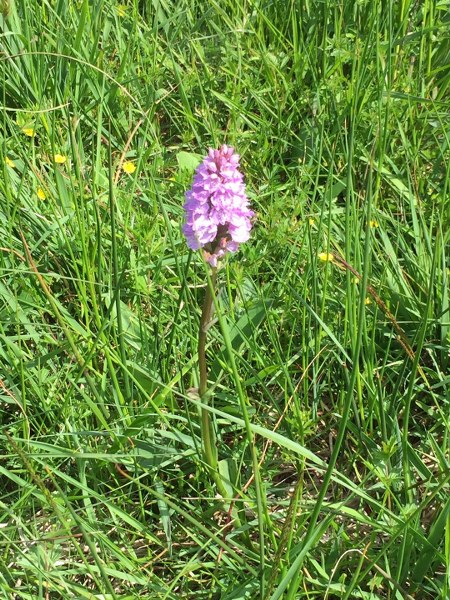
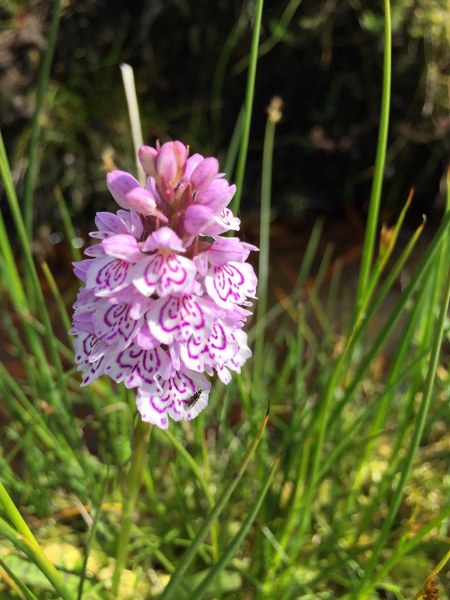
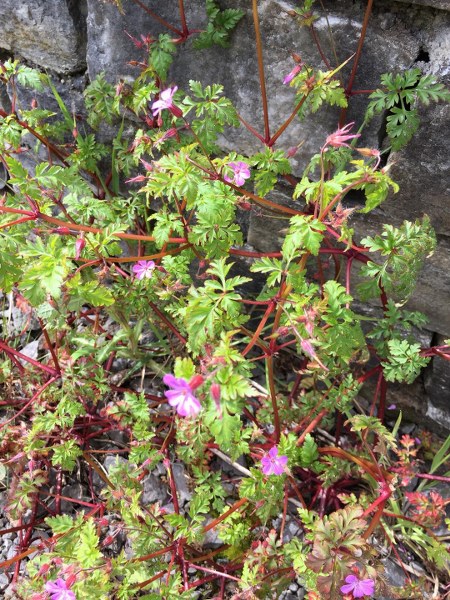
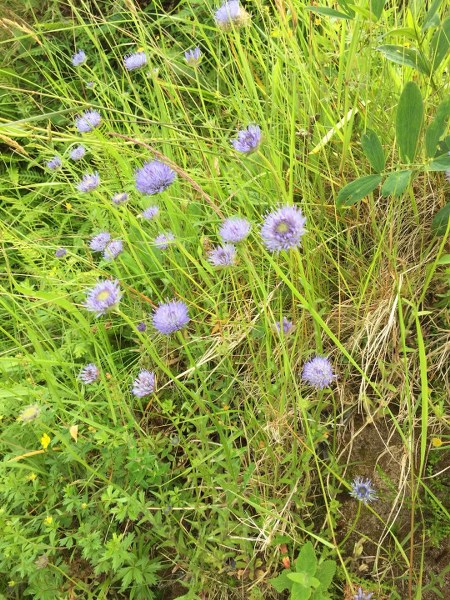
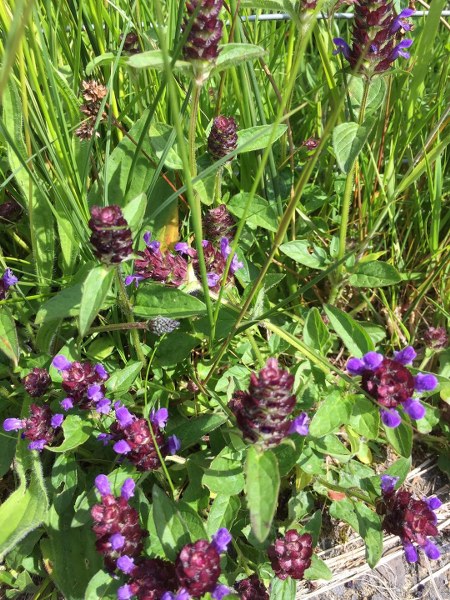
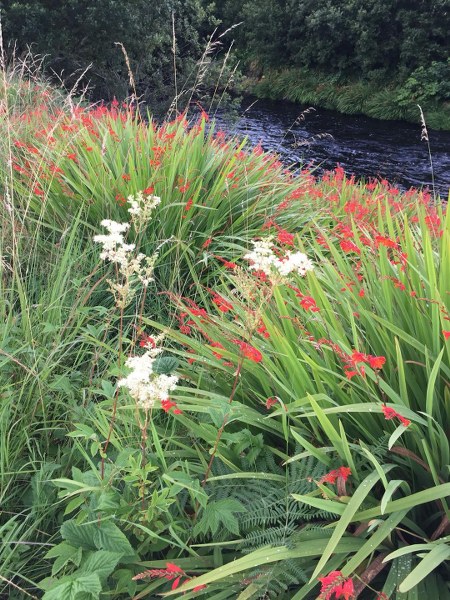
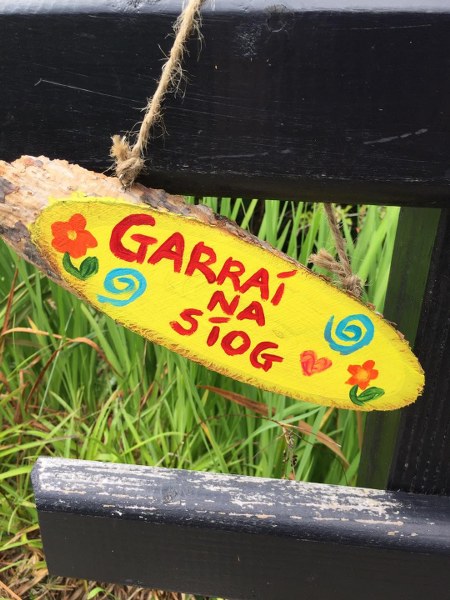
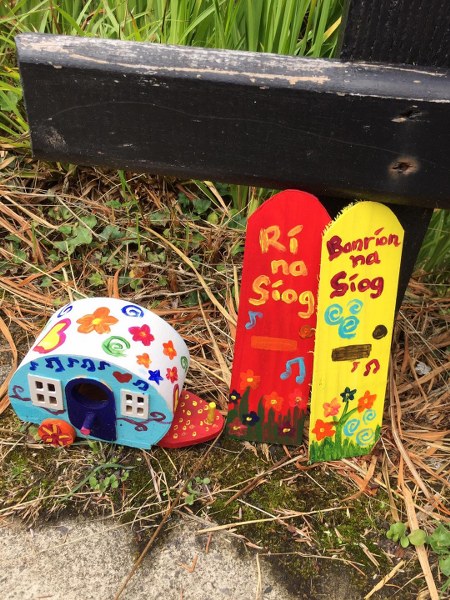

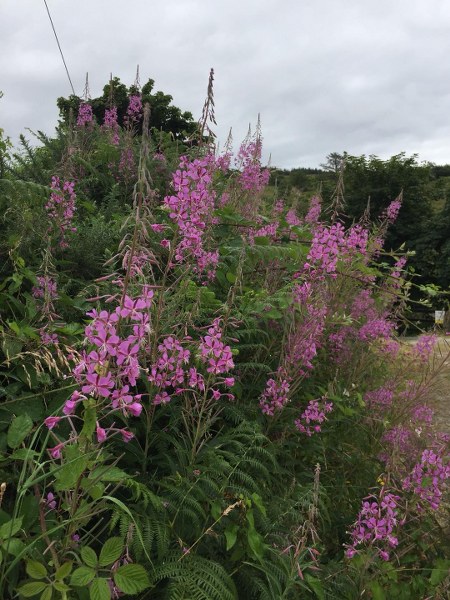
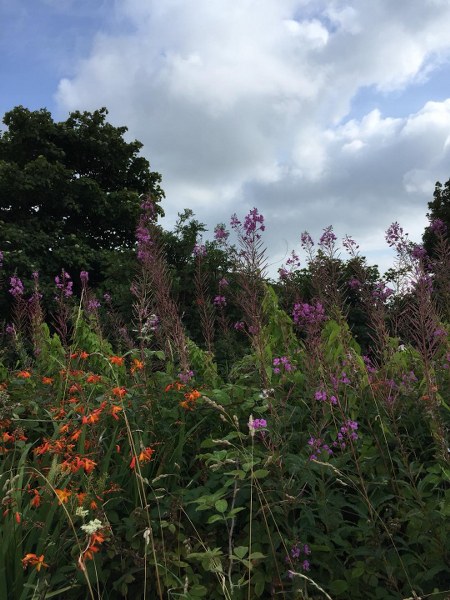
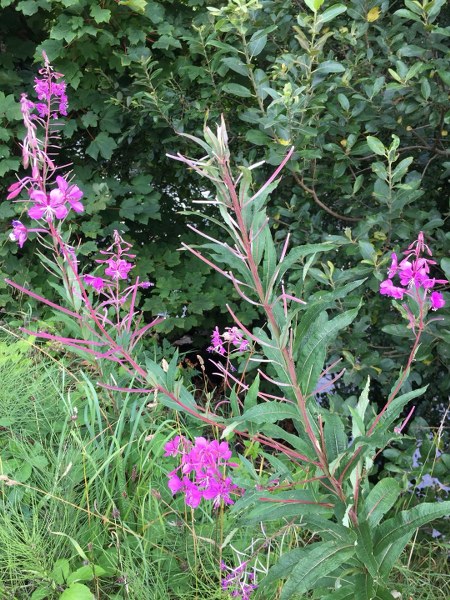
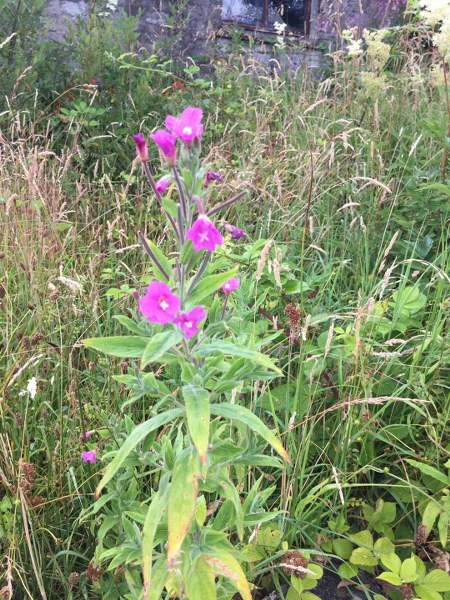
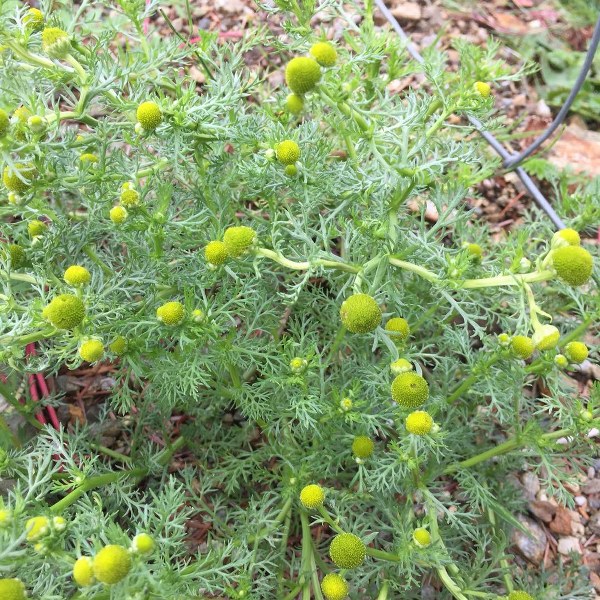
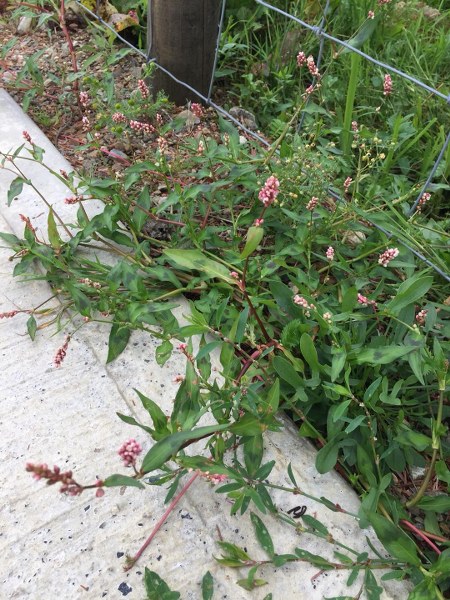
This plant is often referred to locally as the Coffey plant. It is native to East Asia, in Japan, Korea and China, Japanese knotweed is listed by the World Conservation Union as one of the world’s most invasive species. It can crowd out any other herbaceous species. It’s success has been partially attributed to its tolerance of a wide range of soil types, ph, and salinity.
The invasive root system and strong growth can damage concrete foundations, buildings and roads. The County Councils efforts at eradicating it have been quite successful along the Teelin Rd. Let’s hope similar efforts will be made along the Riverwalk.
